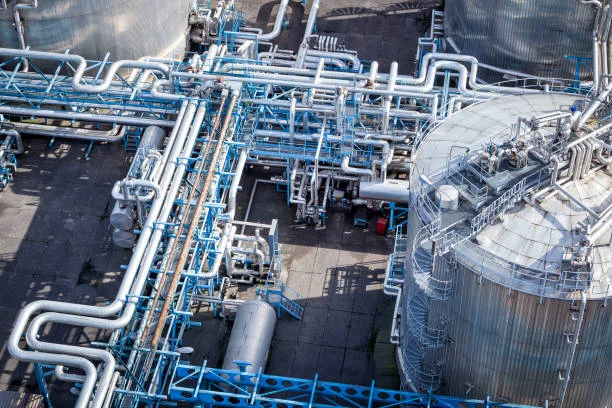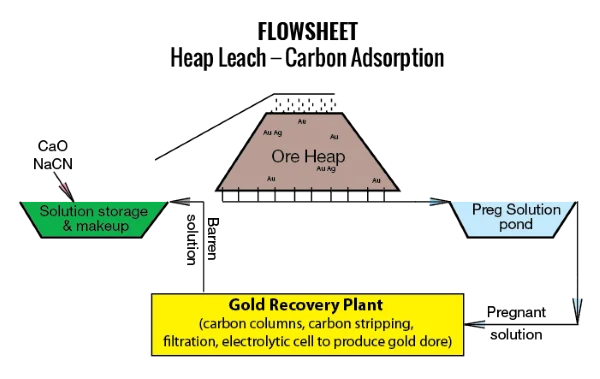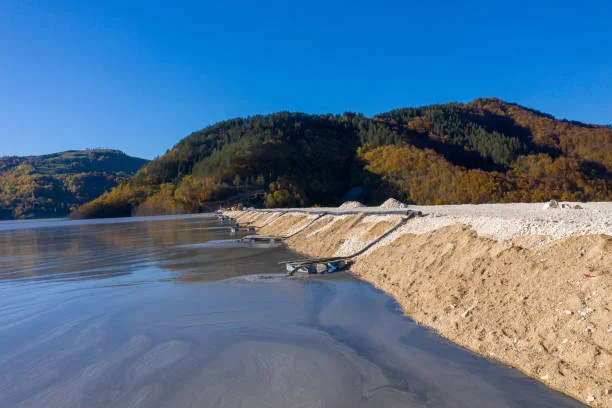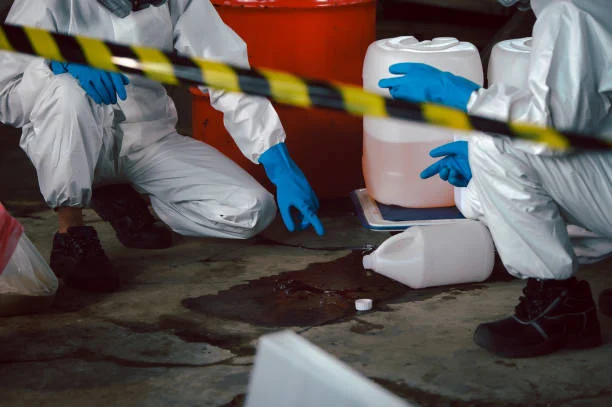
Sodium cyanide is a highly toxic chemical, and its improper management can lead to catastrophic consequences for human health and the environment. Therefore, strict safety management in Sodium cyanide factories is of utmost importance. This article will discuss in detail the safety management measures that should be implemented in such factories.
Storage Safety
Isolated Storage Areas: Sodium cyanide must be stored in specifically designated and isolated storage areas. These areas should be separated from other chemical storage zones to prevent any potential reactions. In particular, it should be kept far away from flammable and explosive substances. For example, if there is a fire in the flammable materials storage area, the Sodium Cyanide storage area should be shielded from its impact. The storage environment needs to be dry and well - ventilated. Moisture can cause sodium cyanide to react and release toxic hydrogen cyanide gas. Additionally, maintaining an appropriate distance from ignition sources, such as open flames in the factory's heating systems or welding operations, is crucial to avoid any accidental ignition.
Clear Identification and Labeling: All containers of sodium cyanide should be clearly labeled with information about the chemical, including its name, toxicity level, and handling precautions. Color - coding systems can be used as an additional visual aid. For instance, using a bright red label to indicate high toxicity. This allows workers to quickly identify the potential hazards associated with the substance, reducing the risk of accidental exposure or incorrect handling.
Handling and Operational Safety
Personal Protective Equipment (PPE): Workers handling sodium cyanide must be equipped with appropriate PPE. This includes chemical - resistant gloves, such as neoprene or rubber gloves, to prevent skin contact. Full - face respirators should be worn to protect against inhalation of any released cyanide gas. Chemical - resistant suits and rubber boots are also essential to safeguard the body from splashes. Additionally, personal hydrogen cyanide gas detectors should be carried at all times to alert workers in case of gas leakage.
Strict Operating Procedures: Only trained and authorized personnel should be allowed to operate sodium cyanide - related processes. Standard operating procedures (SOPs) should be established for every step, from receiving the chemical to its use in production. For example, during the transfer of sodium cyanide from storage to the production area, the SOP should detail the proper lifting techniques, the use of appropriate transfer equipment, and the monitoring of the transfer process for any signs of leakage. These procedures should be strictly adhered to, and any deviation should be immediately reported and investigated.
Pre - operation Checks: Before starting any operation involving sodium cyanide, a comprehensive pre - operation check should be carried out. This includes inspecting the equipment for any signs of wear or damage, ensuring that the ventilation systems are functioning properly, and verifying that all safety devices, such as emergency shut - off valves, are in working order. For example, in a mixing process, the mixing equipment should be checked for leaks, and the agitator should be tested to ensure smooth operation.
Training and Education
Initial and Regular Training: New employees should receive in - depth safety training before being allowed to work with sodium cyanide. The training should cover the properties of sodium cyanide, its potential hazards, and the proper handling and emergency response procedures. Regular refresher training should also be provided to existing employees to keep their knowledge up - to - date. This could be done annually or biennially, depending on the frequency of their exposure to the chemical.
Hands - on Training: In addition to theoretical knowledge, hands - on training is essential. Workers should practice handling sodium cyanide in a simulated environment under the supervision of experienced trainers. This allows them to gain practical skills in using PPE, operating equipment, and responding to potential incidents, such as small spills.
Emergency Response Planning
Comprehensive Plans: Factories must develop detailed emergency response plans. These plans should include procedures for reporting an incident, such as a leak or spill, to the relevant authorities and internal emergency response teams. Evacuation routes should be clearly defined, and workers should be trained on how to evacuate in an orderly manner. First - aid procedures for cyanide exposure should also be included, along with information on the location of emergency eyewash stations and safety showers.
Regular Drills: Conducting regular emergency drills is crucial to ensure that workers are familiar with the emergency response procedures. These drills should simulate different scenarios, such as a major spill or a fire involving sodium cyanide. After each drill, a debriefing session should be held to identify areas for improvement and make necessary adjustments to the emergency response plan.
Waste Management
Proper Disposal: Any waste containing sodium cyanide must be disposed of in accordance with relevant environmental regulations. This may involve treatment to detoxify the waste before disposal. For example, some waste can be treated with oxidizing agents to convert the cyanide into less harmful substances. The waste should then be transported to approved disposal facilities by licensed waste handlers.
Waste Tracking: Establish a system for tracking waste from its generation in the factory to its final disposal. This includes keeping records of the quantity of waste, the treatment methods used, and the details of the disposal facility. This tracking system helps to ensure compliance with regulations and provides a means of accountability.
Monitoring and Inspection
Regular Inspections: Regular inspections of the sodium cyanide storage areas, handling equipment, and production processes should be carried out. These inspections can be conducted by internal safety teams or external regulatory bodies. During inspections, all aspects of safety, including the integrity of storage containers, the functionality of safety devices, and the compliance with operating procedures, should be thoroughly checked.
Continuous Monitoring: Install continuous monitoring systems for sodium cyanide. This can include gas sensors to detect any leakage of hydrogen cyanide gas in the air and liquid sensors to detect leaks in storage tanks or pipelines. The data from these monitoring systems should be regularly reviewed, and any abnormal readings should trigger immediate investigation and corrective action.
In conclusion, ensuring safety in sodium cyanide factories requires a multi - faceted approach that encompasses proper storage, careful handling, comprehensive training, effective emergency response planning, proper waste management, and regular monitoring and inspection. By implementing these measures, factories can significantly reduce the risks associated with sodium cyanide and protect the safety of their workers and the environment.
- Random Content
- Hot content
- Hot review content
- Copper(II) sulfate pentahydrate 98% Grade
- OCCUPATIONAL HEALTH & SAFETYMANAGEMENT SYSTEM CERTIFICATE
- အလုပ် ခေါင်းစဉ် : ပြောင်းသာလဲသာ ရှိ သော ဖောက်သည် နှင့် ထောက်ပံ့ ပေး သူ ဆက်ဆံရေး ကျွမ်းကျင် သူMyanmar
- Sodium Sulfide Industry Grade 60% 30ppm/150ppm Yellow/ Red Flakes Na2s
- Sodium Metal, ≥99.7%
- butyl vinyl ether
- Isobutyl vinyl ether 98% high purity certified Professional producer
- 1Discounted Sodium Cyanide (CAS: 143-33-9) for Mining - High Quality & Competitive Pricing
- 2Sodium Cyanide 98% CAS 143-33-9 gold dressing agent Essential for Mining and Chemical Industries
- 3Sodium Cyanide 98%+ CAS 143-33-9
- 4China's New Regulations on Sodium Cyanide Exports and Guidance for International Buyers
- 5Anhydrous Oxalic acid 99.6% Industrial Grade
- 6Oxalic acid for mining 99.6%
- 7Reagent Grade/Industrial Grade Hydrochloric Acid min.31%
- 1Sodium Cyanide 98% CAS 143-33-9 gold dressing agent Essential for Mining and Chemical Industries
- 2High Quality 99% Purity of Cyanuric chloride ISO 9001:2005 REACH Verified Producer
- 3 High-Quality Sodium Cyanide for Leaching
- 4Powdery emulsion explosive
- 5Industry Grade Electron grade 98% Sulfuric Acid H2SO4 Sulphuric Acid Battery Acid Industrial Sulfuric Acid
- 6Colloidal emulsion explosive
- 7sodium hydrosulfide 70% flakes used Mining Industry












Online message consultation
Add comment: